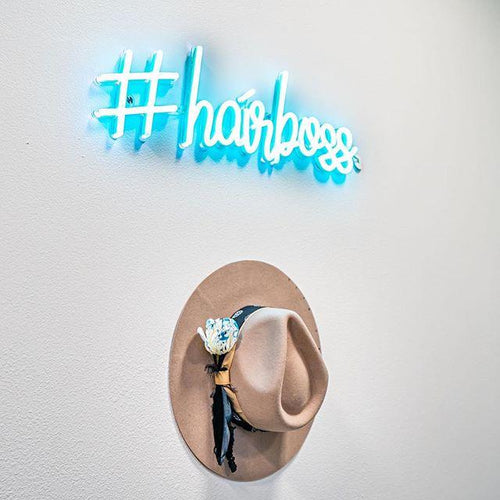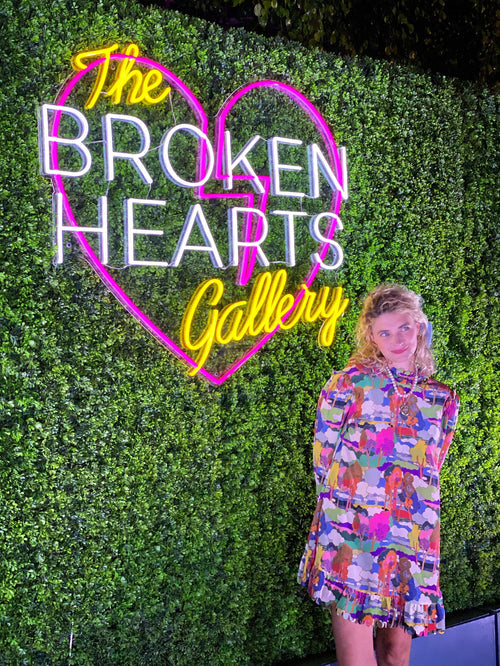The Origins of Neon Lights
The journey of neon lights began in the early 20th century. The discovery of neon sign gas was made in 1898 by British scientists William Ramsay and Morris Travers, who isolated it from liquid air. However, it wasn't until 1910 that French engineer Georges Claude demonstrated the use of neon gas in illuminated signs. Claude’s work paved the way for the commercialization of neon signage, as he introduced the first neon lamp to the public at the Paris Motor Show.
Neon signs quickly gained popularity in the United States in the 1920s. Their bright colors and distinctive glow made them ideal for advertising, especially in bustling cities like New York and Los Angeles. The first neon sign in the U.S. was installed in 1923 for a Packard dealership in Los Angeles, marking the beginning of a neon revolution. By the 1930s, neon signs were everywhere, illuminating streets and buildings with their vibrant hues.
The Technology Behind Neon Light Signs

Neon light signs are made by bending glass tubes into various shapes and filling them with inert gas, typically neon or argon. When an electric current passes through the gas, it excites the atoms, causing them to emit light. Neon gas emits a bright red-orange glow, while other gases and phosphor coatings can produce a wide range of colors. The versatility in color and design has contributed to the enduring popularity of neon signs.
Over time, advancements in technology have introduced alternative methods for creating illuminated signs. LED lights, for example, have become a popular alternative due to their energy efficiency and longevity. However, the unique aesthetic of traditional neon signs remains unmatched, appealing to those who appreciate the artistry and craftsmanship involved in their creation.
Neon Lights in Urban Culture
Neon lights signs have become a symbol of urban life, representing nightlife, entertainment, and commerce. Cities like Las Vegas and Tokyo are renowned for their neon-lit streets, attracting millions of tourists seeking the vibrant experience these lights offer. Neon signs often reflect the local culture, history, and identity of a place. For instance, the iconic “Welcome to Fabulous Las Vegas” sign is not just a marker of a city; it encapsulates the spirit of the Las Vegas experience—glamorous, flashy, and full of excitement.
Beyond their commercial significance, neon lights have been embraced by artists as a medium of expression. Artists such as Dan Flavin and Tracey Emin have used neon in their installations, exploring themes of identity, desire, and the human experience. Neon art challenges traditional boundaries and engages the viewer in new ways, emphasizing the interplay of light, color, and space.
Neon Signs and Advertising
In the realm of advertising, neon light signs have played a pivotal role in shaping consumer behavior and experiences. The bright, eye-catching nature of neon signage makes it an effective tool for attracting attention in a crowded marketplace. Businesses use neon signs to convey their brand identity and create a memorable impression on customers.
The psychological impact of neon signage should not be underestimated. Studies have shown that bright colors and lights can influence mood and decision-making. Neon signs often evoke feelings of nostalgia, excitement, and curiosity, encouraging passersby to engage with the brand. The use of neon has proven particularly effective in the hospitality and entertainment industries, where creating an inviting and energetic atmosphere is essential.
Despite the rise of digital advertising, neon signage has remained relevant. Many businesses continue to utilize traditional neon signs as a way to differentiate themselves from competitors and create a distinctive brand image. The retro appeal of neon, coupled with its artistic potential, ensures its place in modern advertising strategies.
Preservation and the Future of Neon Signs
As urban environments evolve and technology advances, the preservation of neon signs has become a topic of concern. Many historic neon light signs face the threat of being replaced by modern alternatives, leading to calls for conservation efforts. Organizations like the Neon Museum in Las Vegas and the Museum of Neon Art in California work to preserve and celebrate these iconic structures, recognizing their cultural and historical significance.
Moreover, as artists and designers continue to explore new ways of incorporating neon into their work, the medium's future appears promising. Innovations in neon technology, such as environmentally friendly alternatives and hybrid designs, are emerging, allowing for new expressions while maintaining the aesthetic appeal of traditional neon lights.
Conclusion
Neon lights signs are more than mere sources of illumination; they represent a unique intersection of technology, art, and culture. Their vibrant presence in urban landscapes evokes nostalgia and excitement while also serving as powerful tools for branding and advertising. As we move forward, the legacy of neon lights will undoubtedly continue to illuminate our streets and inspire future generations.




